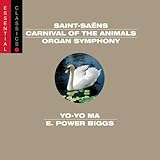Booklist:






Kings Landing Park
Activity Guide
Theme: Fish
Wednesday – introduce topic
Use the book Mister Seahorse
This book also highlights how animals hide themselves using camouflage. There will be two follow-up activities. First, students will make “moving pictures” where they create a river scene (using crayons or paints) as well as several animals which live on the river. Activity: “A moving picture – ducks and fishes” on page 21 of The Children's Year: Seasonal Crafts and Clothes (Festivals (Hawthorn Press))
A painting verse:
Now I take the brush so gently
In my hand with loving care
Watch the color flow so softly
On the paper clean and clear.
For the next activity, tell the children that they will be making their own puppets tomorrow and putting on a puppet show about life at the river. The puppets will be made of paper and on popsicle sticks like the examples they just made for their moving picture BUT the students will make their own paper! While you are setting up the papermaking activity (from the Arnold Grummer kit), let the children brainstorm what river animal they would like to make and what colors they want the paper to be. For your paper pulp you can either tear up construction paper in the appropriate color (or mix two colors together – have the children look back through Mister Seahorse
If you don’t have a blender to mix the pulp, put the materials in a large glass jar with a lid and shake vigorously.
Lay the wet pieces of handmade paper on the old towels to dry overnight.
Thursday – explore topic
Begin by reading Swimmy (Knopf Children's Paperbacks)
Give students a chance to get up and move around by listening to the “Aquarium” (#7) piece of music from the “Carnival of the Animals” recording (this should be track 16). Composer Camille Saint-Saëns wrote this piece of music intending it to sound like the sunlight flickering on the water of the aquarium. Do you agree that it does? How does this piece of music make you want to move? Let students practice moving their puppets. (If you end up with extra time to fill in this session, you can return to this recording and play different selections, asking students to guess what animals are being represented.)
Allow the students to build the set for their puppet show using the large empty cardboard boxes. (Other fish or underwater plants may be drawn on the boxes or cut out of construction paper and glued on if desired.) Have the students put on a show!
Friday – make field trip journals
While waiting for the field trip, read Where the River Begins (Picture Puffins)
Materials List
Crayons OR Paints, paintbrushes, clear water for rinsing brushes
Plain white paper
Construction paper
Brass paper fasteners
Popsicle sticks
Glue
Scissors
Papermaking kit
Blender OR Large jar with a lid
Shallow tub or dishpan
Tray or cookie sheet with sides
Several old towels
Torn construction paper pieces OR Cotton linters, watercolor paints
Fish template
Large empty cardboard boxes
Construction paper
Bubble wrap, paints, paintbrushes OR Crayons
3 hole punch
8 ½ x 11 inch white paper
Ribbon in various colors
Pencils
Fishing poles or nets for the field trip!




 Immersive Experience
Immersive Experience Immersive Experience
Immersive Experience







No comments:
Post a Comment